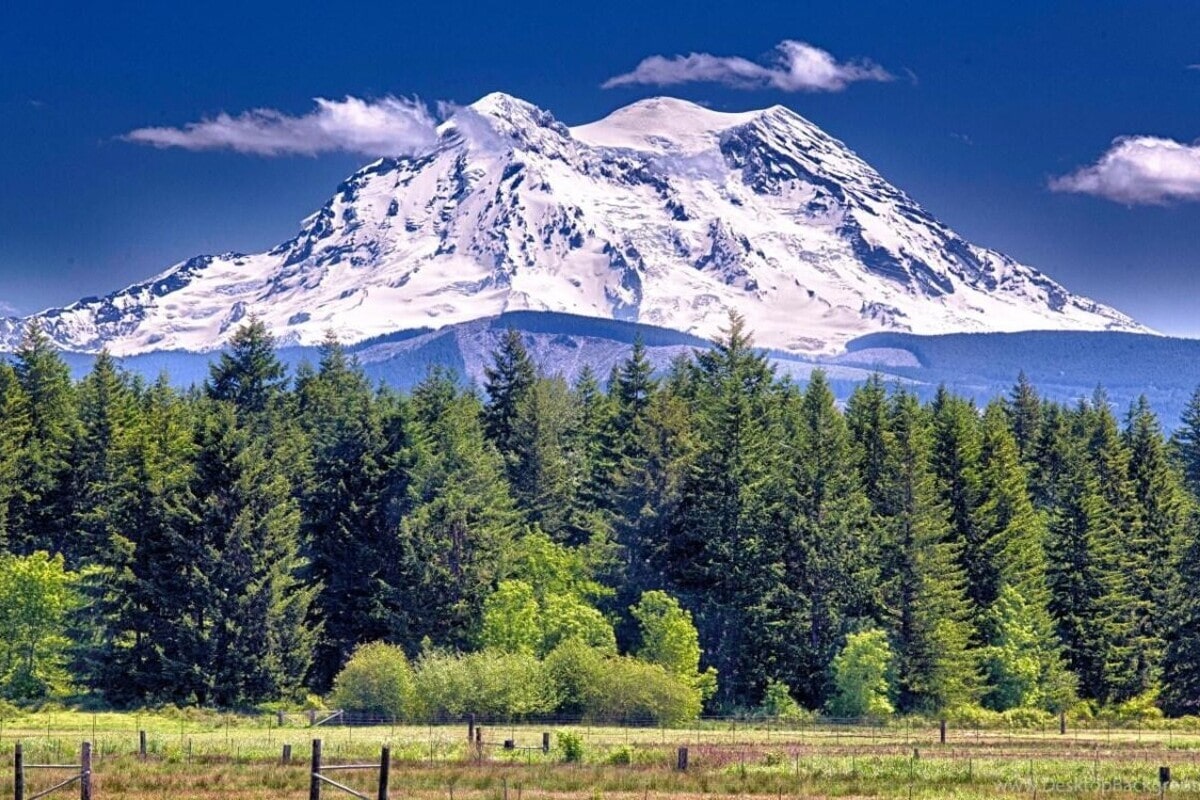Mount Rainier is not only the highest peak in Washington State but also one of the most impressive and potentially dangerous volcanoes in North America. Its majestic silhouette towers over the Pacific Northwest and draws tourists, scientists, and nature lovers from around the world. Surrounded by glaciers, forests, and alpine meadows, Rainier symbolizes the power and beauty of the natural world. At the same time, its geological activity makes it a constant subject of scientific observation. Below are some fascinating facts about Mount Rainier that you may not have known.
- Mount Rainier is the highest point in both Washington State and the entire Cascade Range. It stands 14,411 feet above sea level and is visible from hundreds of kilometers away, including from Seattle. The snow-capped summit is a defining feature of the region’s skyline. Its towering presence makes it one of the most iconic mountains in the United States.
- It is an active stratovolcano, with the last major eruption occurring over a thousand years ago. Despite this, it is still classified as potentially hazardous. Thermal activity such as hot springs and fumaroles can be found on the mountain. The volcano is continuously monitored by a network of seismic instruments.
- Mount Rainier has more glaciers than any other mountain in the contiguous United States. There are over 25 named glaciers, with the largest being the Emmons Glacier. These glaciers feed numerous rivers and streams, providing water to a significant portion of western Washington. They also offer valuable data for climate research.
- Mount Rainier National Park was established in 1899 as the fifth national park in the United States. It covers more than 950 square kilometers of forests, meadows, rivers, and alpine zones. Over 900 species of plants and a wide variety of animals live within the park. Each year, it attracts around two million visitors.
- The mountain was named by George Vancouver in 1792 after British Admiral Peter Rainier. However, Native American tribes had long known it as Tahoma, meaning “The Great Mountain.” This indigenous name is still used today and holds spiritual significance. It reflects the deep connection between the land and native cultures.
- Climbing Mount Rainier is a serious challenge that requires strong physical fitness and experience with glacier travel. Over 10,000 people attempt to reach the summit each year, but only about half succeed. The routes are fraught with dangers such as crevasses, avalanches, and sudden weather changes. Despite the risks, it remains one of the most popular mountaineering destinations in the country.
- The mountain’s ecosystem changes dramatically with elevation. The lower slopes are covered in coniferous forests, higher areas feature wildflower-filled meadows, and the upper regions are dominated by snow and ice. During the summer, colorful flowers blanket the hillsides. This diversity makes Rainier a favorite destination for botanists and photographers.
- One of the most famous areas in the park is Paradise, known for its breathtaking summer beauty. It includes a visitor center and a historic lodge, serving as a base for many hiking trails. From here, visitors enjoy panoramic views of glaciers and valleys. Paradise is the most visited part of the park.
- Mount Rainier poses a serious threat to nearby communities in the event of a major eruption or lahar — a destructive mudflow composed of water, rock, and volcanic debris. Cities like Tacoma and Orting could be affected in a worst-case scenario. State authorities have developed evacuation plans and warning systems. Hazard zones are regularly updated based on scientific data.
- The mountain is included on the list of the world’s 16 most dangerous volcanoes by the International Association of Volcanology. This is due to its size, activity level, and proximity to populated areas. Nevertheless, Rainier continues to inspire awe and admiration. It appears frequently in artwork, postcards, and photography.
- On clear days, Mount Rainier is easily visible from Seattle, about 90 kilometers away. Locals have a saying for such days — the mountain is out. This phrase has become part of the regional identity. It reflects a shared sense of pride and connection to the landscape.
- Traces of ancient lava flows and craters can still be found on Rainier’s slopes, shaped by thousands of years of volcanic activity. Geologists study these features to better understand the mountain’s history. Some rock formations are more than 500,000 years old. This makes Rainier a valuable resource for understanding long-term volcanic processes.
Mount Rainier is a remarkable blend of natural power, scenic beauty, and cultural meaning. Its ecosystems, geology, and symbolic importance create a truly unique presence in the Pacific Northwest. These incredible facts about Rainier offer a fresh perspective on its value to science, nature, and human experience. The more we learn about the mountain, the deeper we appreciate its role in shaping the world around it.





